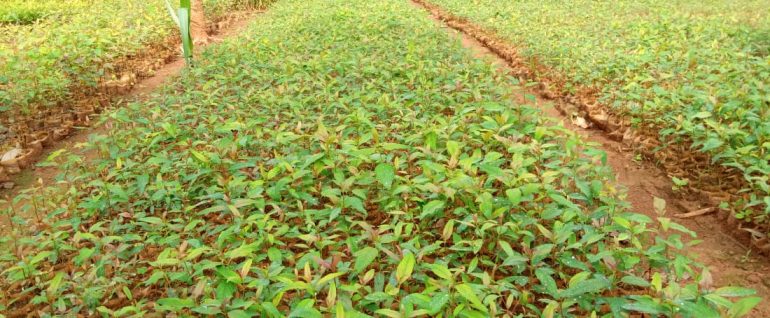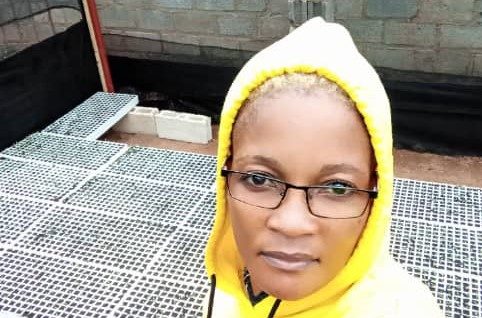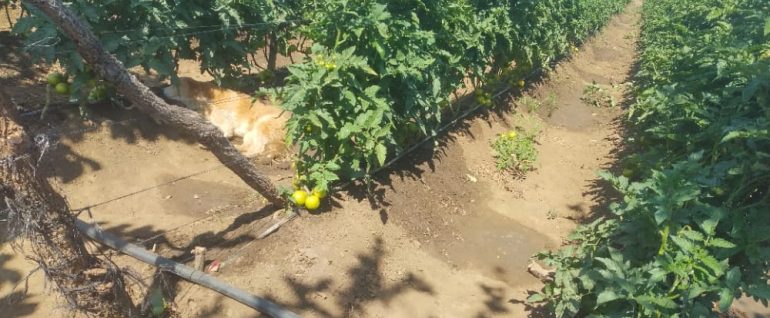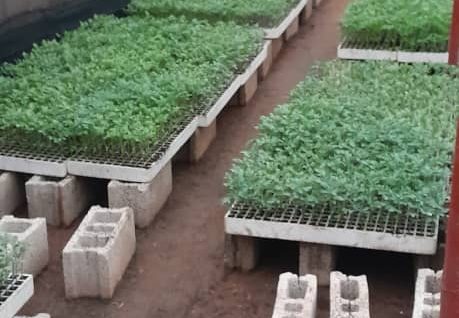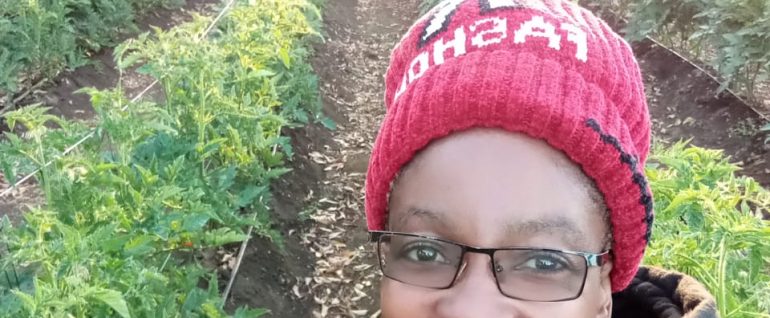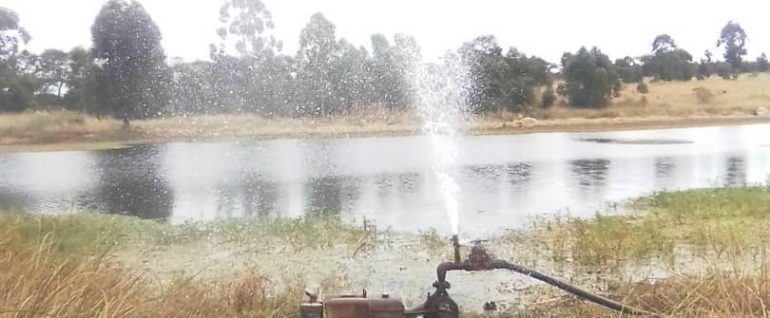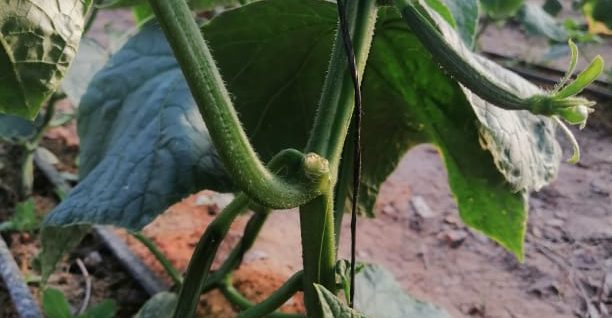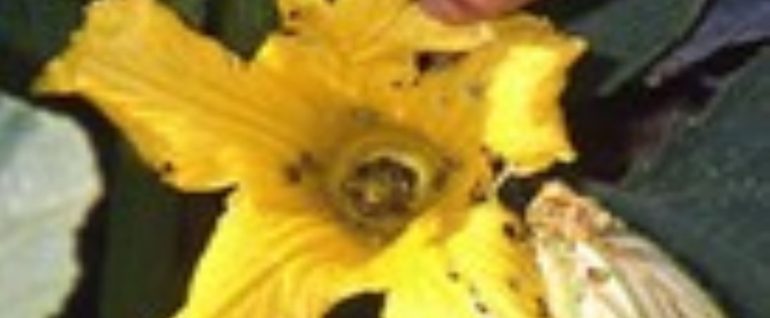This time we are introducing you to Chrisphene Ontonyi Omwebu from KisiiCounty, Kenya, and his Mkulima Nursery.Chris, as he is usually called, has been running the nursery since 2018.After graduating in the field of Agriculture resource management, it waslogical to start a business in the field and at the same time, to help societyconserve the environment and keep it green. The nursery was a way tosupply customers with needed plants as well as an opportunity to advisethe same customers on what would best suit them when they build theirown garden.Chris focused on tree seedlings, both fruit trees and ornamental trees,species, [...]
Read MoreHere we will go through the history of the business. From its establishment up to today. Initially, Chris had several challenges as happens to every business. The first, asfor many, question was, what to start? A farm, if so, then what? Secondly, afterdeciding to start a plant nursery, would he have a market for his products? Thenof course, how to acquire materials, seeds, seedlings, fertilizer, etc.? Finally, oneof the most important questions was, where would he get the funding?To overcome all these challenges, Chris sought out and found experts to help, andsearched for information on the business aspect of a nursery [...]
Read MoreI introduced you to Celine a few days ago. Her story is so interesting and motivating that I must share it with you here. In February this year, Celine visited a friend and saw their tomato operation. Being in search of something meaningful to do, she felt she would be able to do this on her own. She had nothing, no training, no funds, no land. Nevertheless, in March she started with her 21 trays of tomato seedlings. This was a humble beginning, but a beginning based on determination and hard work. Please follow Celine’s story, she can be an example for [...]
Read MoreAs I said in my last post on Celine and her project, Celine started her project without anything. She had no land, didn’t even know where to put down the greenhouse she wanted to purchase, she had no training on how to grow or care for tomato plants, and she had no money to start. Therefore, obviously, her biggest challenges were money, space, and education. So how did she do all of this? She was able to secure a small loan to purchase a greenhouse of 10X4, she bought 21 trays to grow seedlings, and she got three envelopes of seeds. Then [...]
Read MoreAs I continue with the story of Celine, after turning over her treys three times and growing from 21 Trays to 140 in her tiny greenhouse of 10 X 4, she was able to secure land, one hectare to start transplanting on her own. She has now turned this land into a flourishing garden of healthy tomato plants. Celine is expecting her first full harvest by the second half of August. Her next step will be to purchase land on her own and make it a permanent farm. We should all applaud Celine’s effort and congratulate her on her results. She is a [...]
Read MoreCeline started in a Greenhouse of 10 X 4 with only 21 trays and 3 envelopes of seeds, back in March. Now Celine has made her first full harvest, after growing to 140 trays and one hectare of 28,000 fully grown tomato plants. As you can see in the photos, Celine has done an amazing job in a very short time. Starting to build her greenhouse in February and planting her first trays in March, she began her own tomato field in May and now she constantly turns over her seedlings trays and her first harvest looks fabulous. My heartfelt congratulations to [...]
Read MoreRESILIENCE! We all remember Celine Aluspato and her tomato project from earlier this year. She started in March from zero, growing and selling seedlings, building up the business to a one-hectare of tomatoes. In August, she had her first harvest. Her harvest was badly damaged from a Tuta attack. Tuta absolute or leafminers is a moth whose larva attacks tomatoes and can destroy the whole harvest. Not having confronted the leafminers before, Celine’s harvest suffered greatly from the attack. Many would have given up farming, changed crops, or otherwise altered their course. Not Celine. While she never stopped producing and selling seedlings, and [...]
Read MoreI’m pleased to introduce you to Rimani Chatama from Zimbabwe. Mr. Chatama has 25 years of experience in agriculture, with a wide variety of products. He has been a farm manager both for commercial crops and animals, goats, sheep, and poultry, but mostly cattle. After Mr. Chatama retired from farm management, he started working on his own projects. First, he had a small plot of land where he cultivated cauliflower, but he did not find the land suitable, too small to sustain a productive farm, so he acquired 5 hectares of land in a different location. Mr. Chatama’s intention was to grow [...]
Read MoreAs mentioned, Mr. Chatama decided on English cucumbers because they are easy to market. Also, by harvesting three times per year, he can maximize the yield. Mr. Chatama’s greenhouse is 320 m2, and he has planted 500 cucumber plants there. English cucumbers are sweet, slender, and straight, and have fewer, less noticeable seeds than many other cucumbers. You’ll also see them called greenhouse cucumbers, hot house cucumbers, European cucumbers, and seedless cucumbers. English cucumbers are about 14 inches long and about 1-1/2 to 2 inches in diameter. They’re grown off the ground, hanging or on a trellis, to get their characteristic shape. [...]
Read MoreEven if you are a professional and know what you are doing in the garden, you will find challenges. Mr. Chatama had to prepare for several challenges when he started his English cucumber project. There are several pests constantly seeking to make their life on or in your plants and vegetables. In the case of the cucumber, there are four types of insects that are especially dangerous. These are the Fruit Fly, the White Fly, the Cucumber Beetle, and Red Spider Mites. All these insects attack the plant by laying eggs in it like the Fruit Fly, sucking the plant sap, [...]
Read More